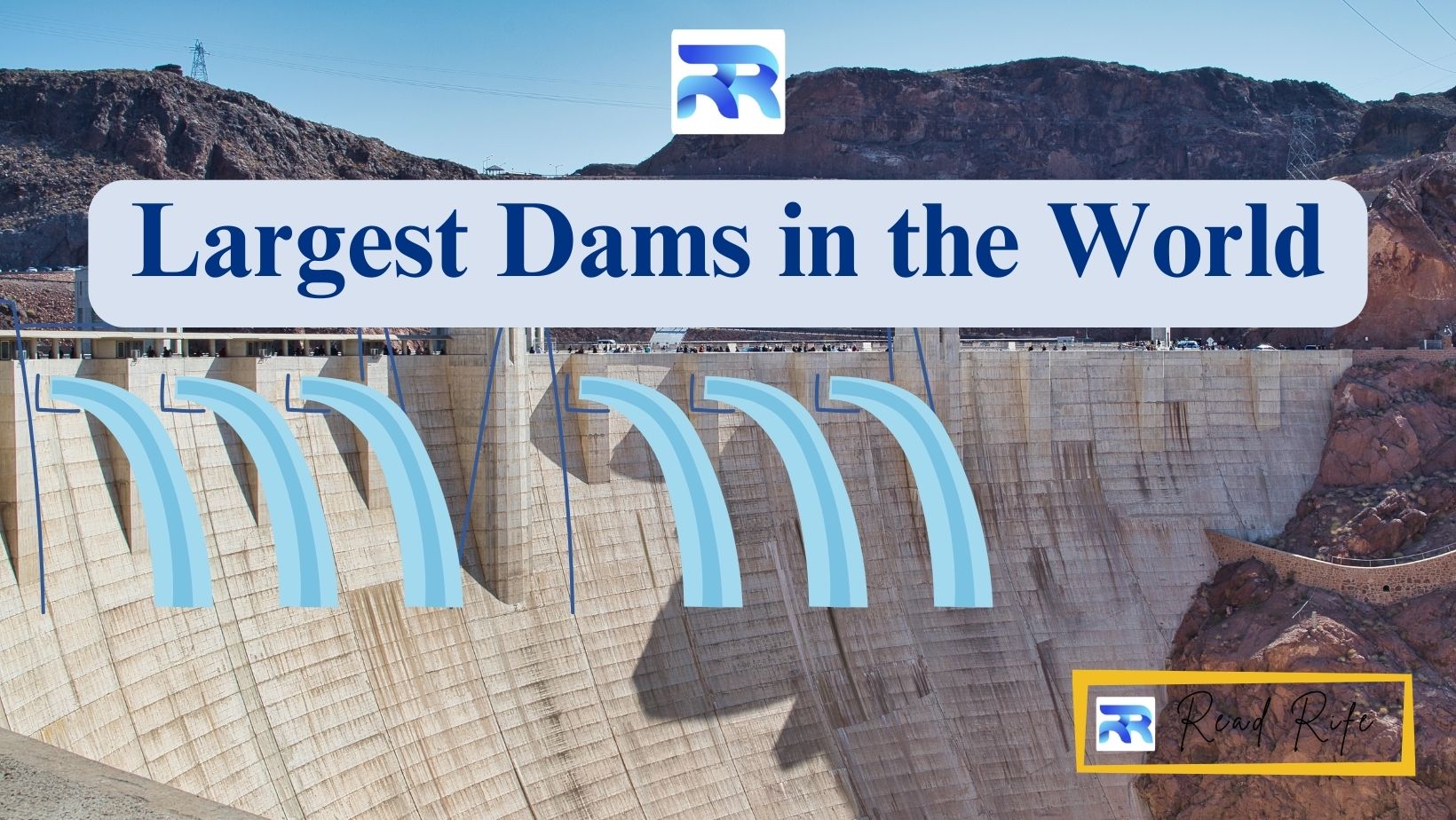Search Posts

7 Largest Dam in the World
Dams stand as colossal monuments to human ingenuity, harnessing the might of water to fuel economies and communities worldwide. Among them, the seven largest dams represent not only engineering triumphs but also crucial pillars of sustainable development. Leading this illustrious list is the Three Gorges Dam in China, a towering behemoth that reigns as the world's largest power station, symbolizing China's commitment to clean energy and water resource management.
Following closely is the Itaipu Dam, nestled on the border between Brazil and Paraguay, epitomizing international collaboration and innovation. These dams, along with others like the Belo Monte Dam in Brazil and the Xiluodu Dam in China, showcase the immense potential of hydroelectric power to drive progress while also raising pertinent questions about environmental impact and social equity. As we delve into the intricacies of these engineering marvels, we uncover not just their monumental scale but also their profound influence on landscapes, economies, and societies worldwide.
List of the 7 Largest Dam in the World
Three Gorges Dam (China)
Located on the Yangtze River in China, the Three Gorges Dam is the largest hydroelectric dam in the world in terms of both electricity generation capacity and structural volume. It stands at approximately 607 feet (185 meters) tall and has a reservoir capacity of 39.3 cubic kilometers.
Itaipu Dam (Brazil/Paraguay)
Situated on the Paraná River between Brazil and Paraguay, the Itaipu Dam is one of the largest hydroelectric dams in terms of electricity generation capacity. It has a height of 643 feet (196 meters) and a reservoir capacity of 29.3 cubic kilometres.
Xiluodu Dam (China)
The Xiluodu Dam is another massive hydroelectric dam on the Jinsha River in China. It has a height of 937 feet (285 meters) and a reservoir capacity of 12.67 cubic kilometres, making it one of the largest dams in the world.
Guri Dam (Venezuela)
Located on the Caroni River in Venezuela, the Guri Dam is one of the largest dams in terms of reservoir capacity. It has a height of 531 feet (162 meters) and a reservoir capacity of 135 cubic kilometers, making it crucial for hydroelectric power generation in Venezuela.
Bratsk Dam (Russia)
Situated on the Angara River in Russia, the Bratsk Dam is one of the largest dams in terms of structural volume. It has a height of 371 feet (113 meters) and a reservoir capacity of 169.27 cubic kilometers, primarily used for hydroelectric power generation.
Tarbela Dam (Pakistan)
Located on the Indus River in Pakistan, the Tarbela Dam is one of the largest earth-filled dams in the world. It has a height of 469 feet (143 meters) and a reservoir capacity of 13.69 cubic kilometers, playing a crucial role in irrigation and hydroelectric power generation.
Bakhtiyari Dam (Iran)
The Bakhtiyari Dam, also known as the Karun-3 Dam, is situated on the Karun River in Iran. It has a height of 896 feet (273 meters) and a reservoir capacity of 7.72 cubic kilometers, making it one of the largest dams in the Middle East.
Interesting Facts and Statistics about Each Dam
Three Gorges Dam, China:
Construction of the Three Gorges Dam began in 1994 and was completed in 2012.
It is the world's largest hydroelectric power station in terms of installed capacity, with an output of over 22,500 megawatts.
The reservoir created by the dam stretches for about 660 kilometers (410 miles) and has a storage capacity of 39.3 cubic kilometers.
It's one of the most controversial dam projects due to its environmental and social impacts, including displacement of millions of people and ecological changes to the Yangtze River.
Itaipu Dam, Brazil/Paraguay:
Itaipu Dam was completed in 1984 and is jointly owned by Brazil and Paraguay.
It has an installed capacity of around 14,000 megawatts, making it one of the largest hydroelectric power plants in the world.
The Itaipu Dam has a height of 196 meters (643 feet) and a crest length of 7,919 meters (25,981 feet).
Itaipu's reservoir covers an area of approximately 1,350 square kilometers (520 square miles).
Xiluodu Dam, China:
Construction of the Xiluodu Dam began in 2005, and it was completed in 2013.
With an installed capacity of over 13,860 megawatts, it's one of the largest hydroelectric power stations in China.
The dam stands at a height of 285 meters (935 feet) and has a crest length of 700 meters (2,300 feet).
The Xiluodu Dam reservoir extends for about 147 kilometers (91 miles) and has a total storage capacity of 12.67 cubic kilometers.
Guri Dam, Venezuela:
The Guri Dam, also known as the Simón Bolívar Hydroelectric Plant, was completed in 1986.
It has an installed capacity of approximately 10,235 megawatts, making it the third-largest hydroelectric power plant in the world.
The Guri Dam's reservoir, Lake Guri, covers an area of about 4,250 square kilometers (1,640 square miles).
It provides about 70% of Venezuela's electricity needs but has faced challenges due to droughts and sedimentation in recent years.
Bratsk Dam, Russia:
The Bratsk Dam was completed in 1967 on the Angara River in Siberia.
It has an installed capacity of around 4,515 megawatts and is one of the largest hydroelectric power stations in Russia.
The reservoir created by the dam, Lake Bratsk, is one of the largest artificial reservoirs in the world by volume.
The Bratsk Dam played a crucial role in the development of Siberia and the expansion of heavy industry in the region.
Tarbela Dam, Pakistan:
Tarbela Dam, completed in 1976 on the Indus River, is one of the largest earth-filled dams in the world.
It has an installed capacity of approximately 4,888 megawatts and is a vital source of hydroelectric power in Pakistan.
The reservoir created by the dam, Tarbela Lake, is one of the largest reservoirs in Pakistan, with a capacity of over 13.69 cubic kilometers.
Bakhtiyari Dam, Iran:
The Bakhtiyari Dam, also known as the Karun-3 Dam, is located on the Karun River in Iran.
It has an installed capacity of around 1,500 megawatts and contributes to Iran's electricity generation.
The dam was inaugurated in 2012 and has a height of 273 meters (896 feet) and a crest length of 435 meters (1,427 feet).
The reservoir created by the dam helps regulate water flow in the Karun River and supports irrigation and agricultural activities in the region.
Author : Dhruvi
You May Also Like
-
Read More
7 Largest Dam in the World
7 Largest Dam in the World Dams stand as colossal monuments to human ingenuity, harnessing th... -
Read More
सबसे ज्यादा जीने वाले जीव उम्र 15 हजार साल तक
सबसे ज्यादा जीने वाले जीव (15 हजार वर्ष �... -
Read More
The 10 Largest Water Animals in the World: Fascinating Giants of the Ocean
Introduction The oceans of our planet are home to some of the most incredible and massive creatures... -
Read More
सबसे कम जीने वाले जीव उम्र 1 दिन से भी कम
दुनिया में सबसे कम जीने वाले जीव यहाँ...
Leave a Comment
Popular Posts
- 7 Principles Introduction to Fast Food Shop Vastu A fast food shop thrives on efficient service, quick customer turnover, and a welcoming atmosphere
- 9 Vastu Secrets for Creating a Harmonious Living Room
- Main door house entrance vastu
- 8 Principles Restaurant Vastu: Optimize Your Dining Space for Success and Comfort
- 4 type of West facing house disadvantages
- 7 Points How Vastu Shastra Works: Understanding Principles and Applications
Related Posts
- The 10 Largest Countries in the World by Size: Expansive Lands of Earth
- The 10 Largest Rivers in the World: Majestic Waterways of the Earth
- दुनिया के सबसे छोटे पक्षी (Smallest Birds in the World)
- 5 top IT Companies in the World 2023
- The 10 Largest Mountain Ranges in the World: Majestic Spans of Earth's Peaks
- The 10 Largest Jungles in the World: Exploring Nature's Vast Wilderness





Comments